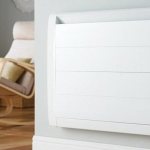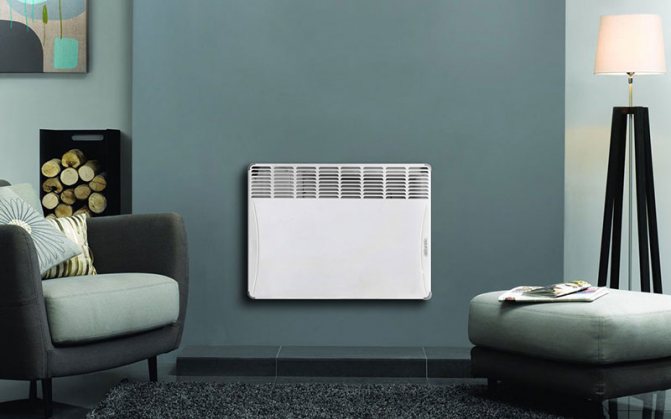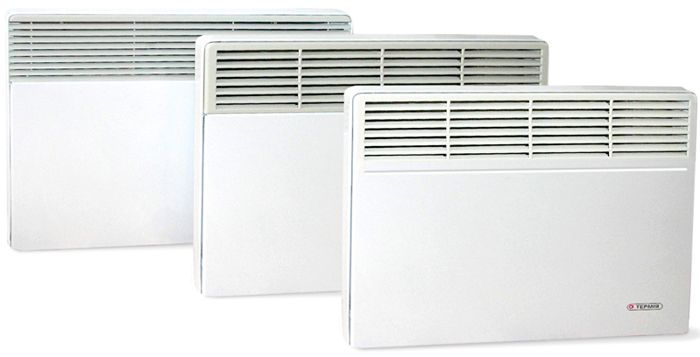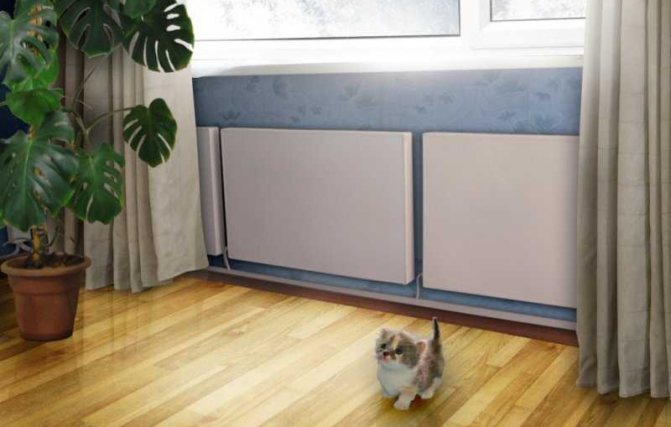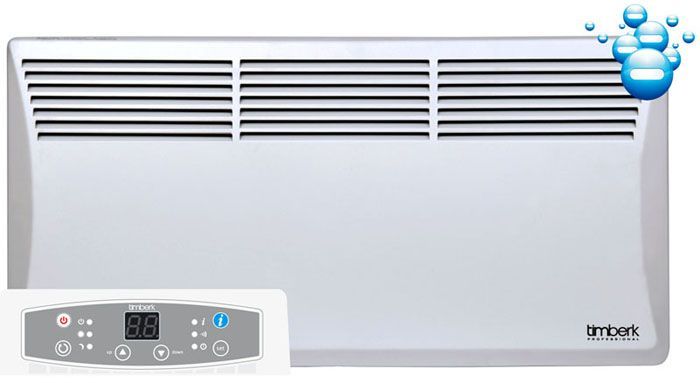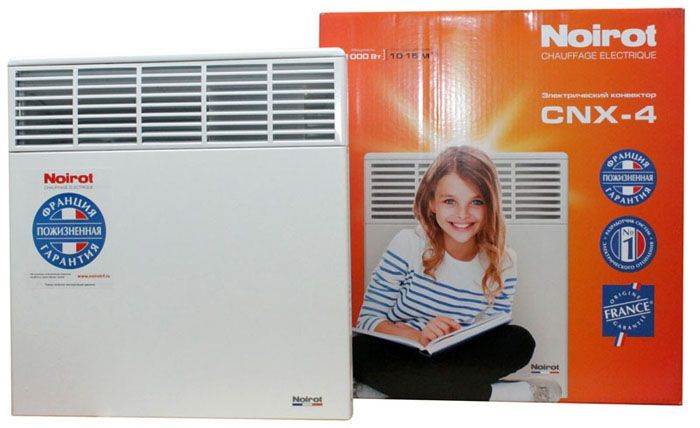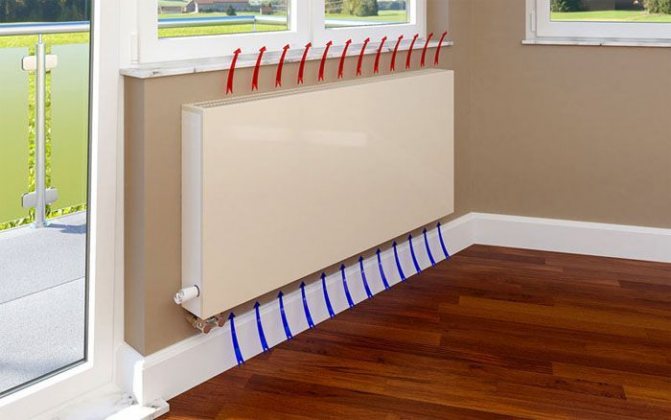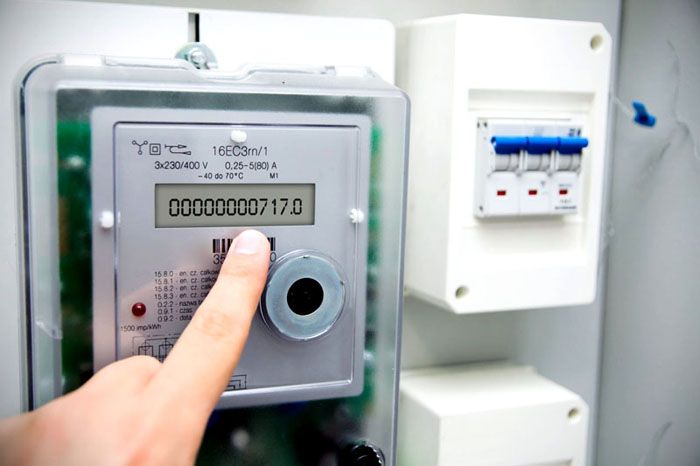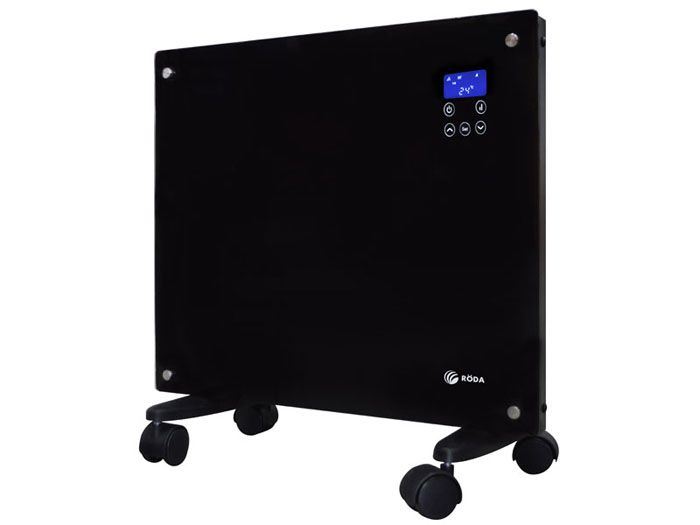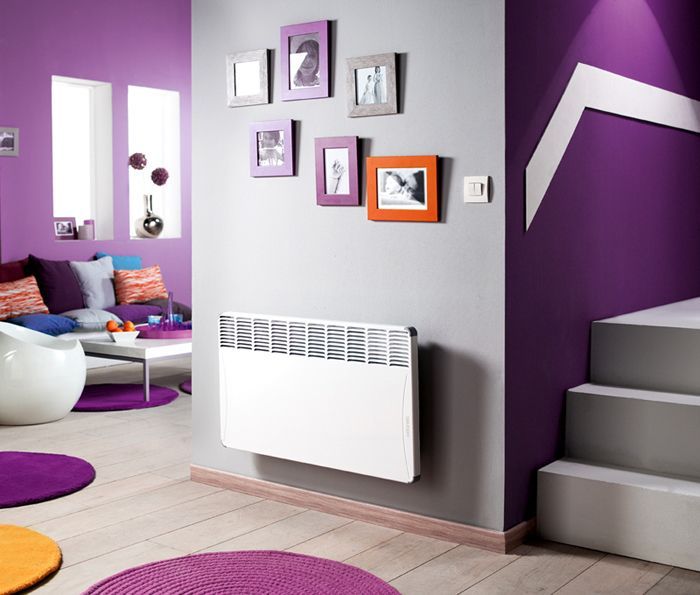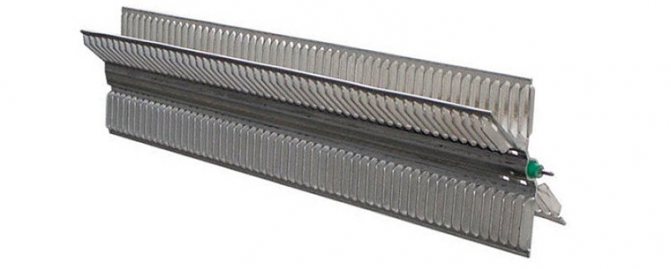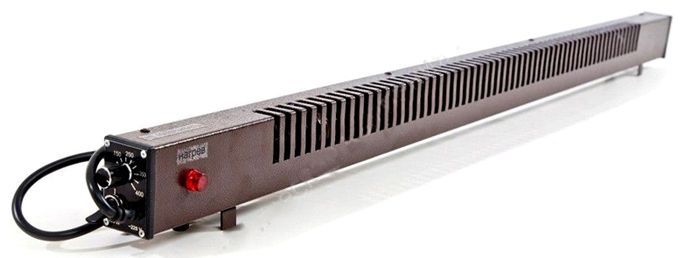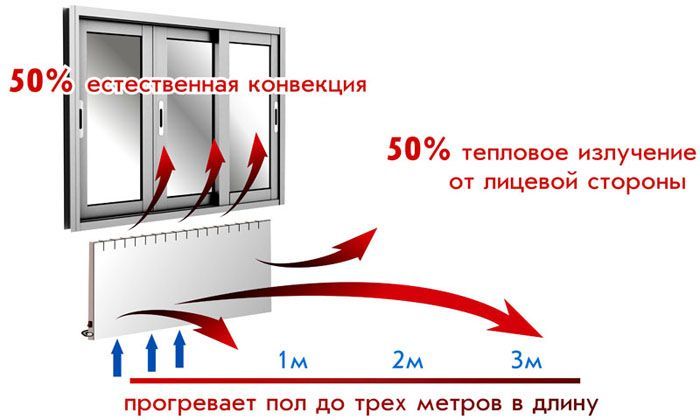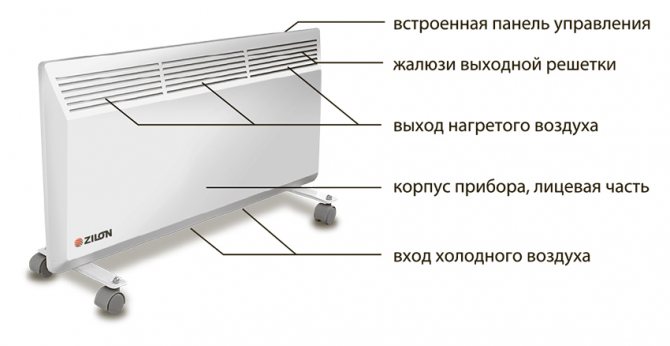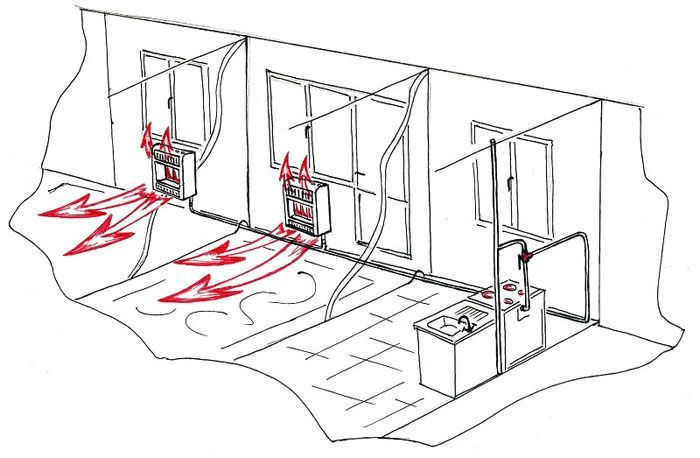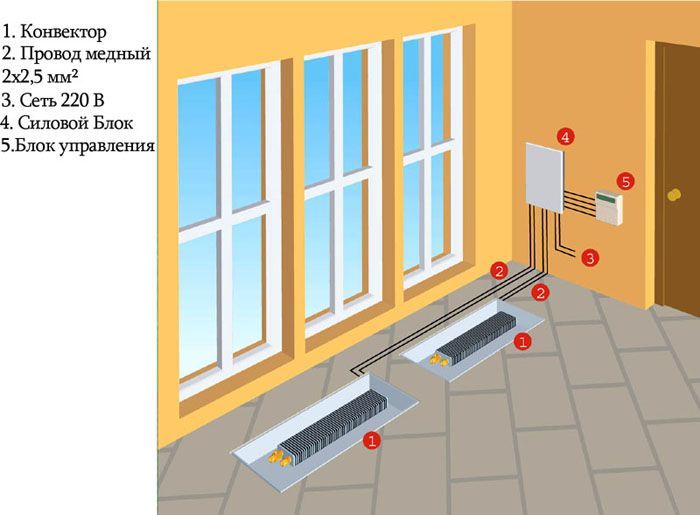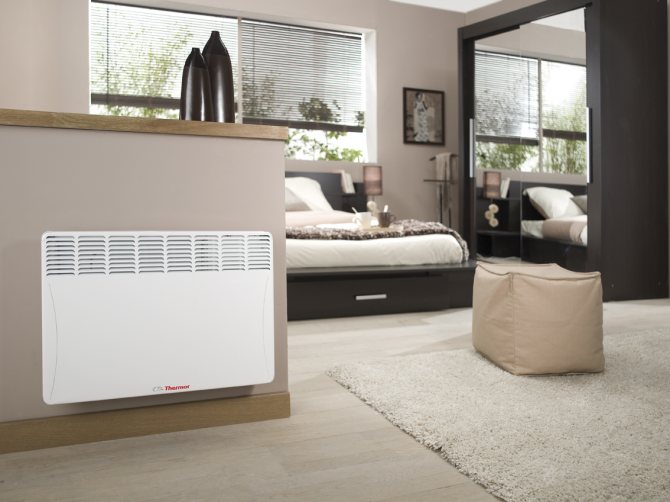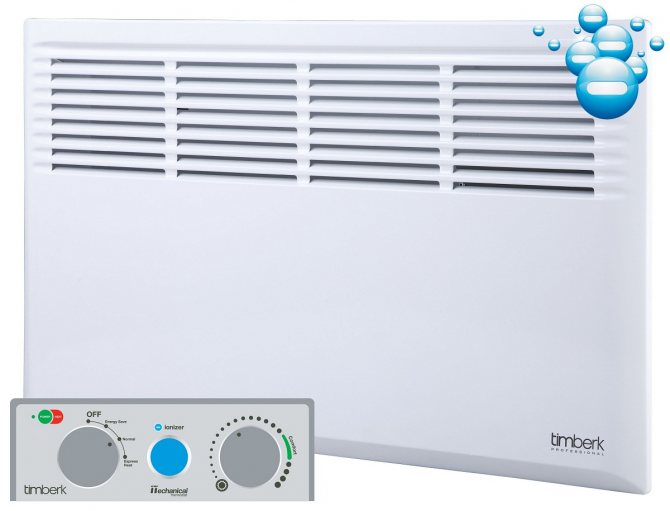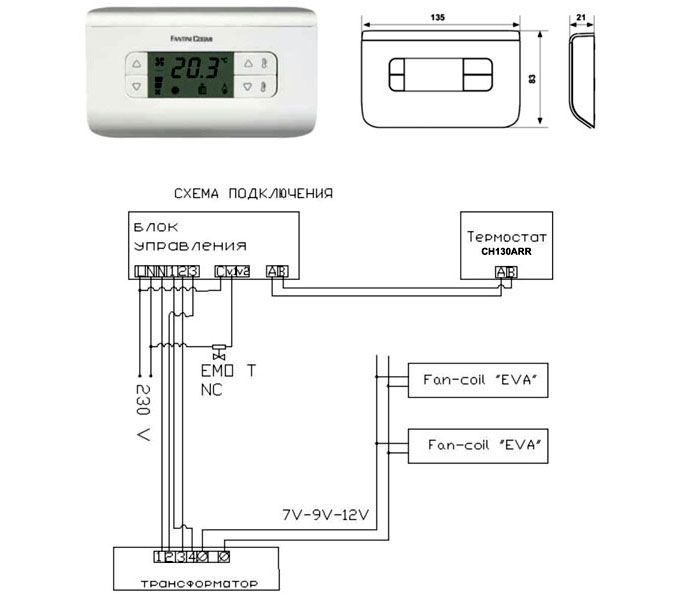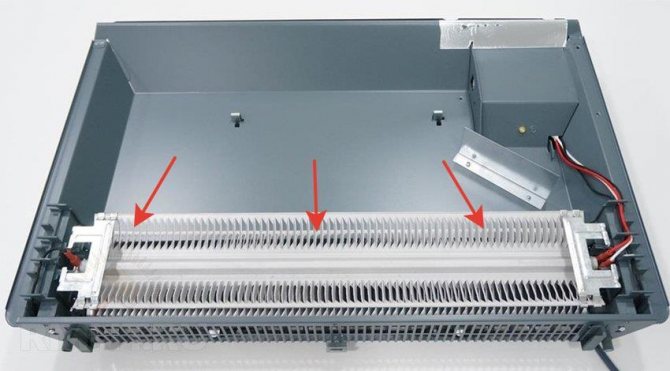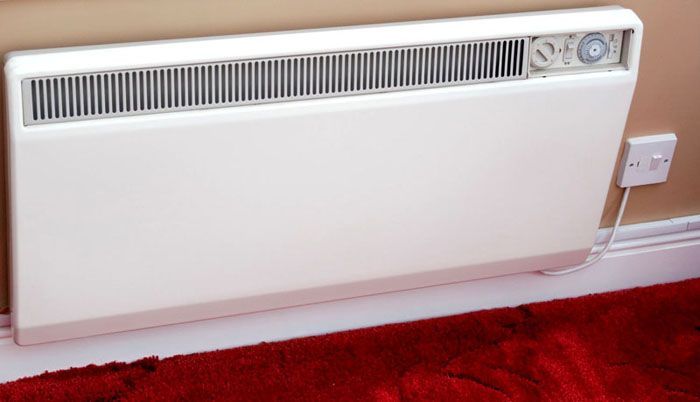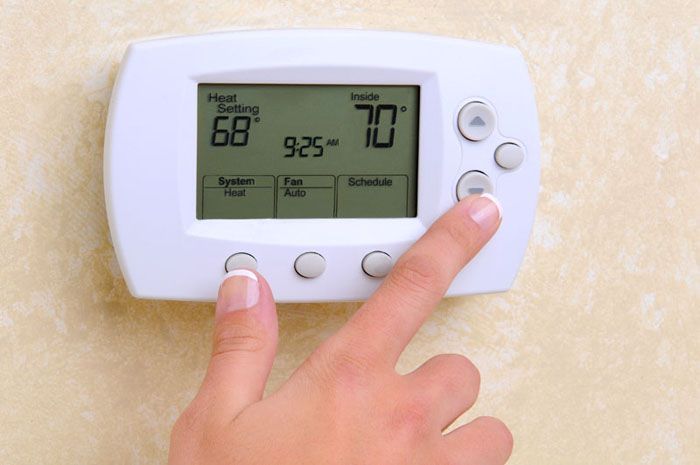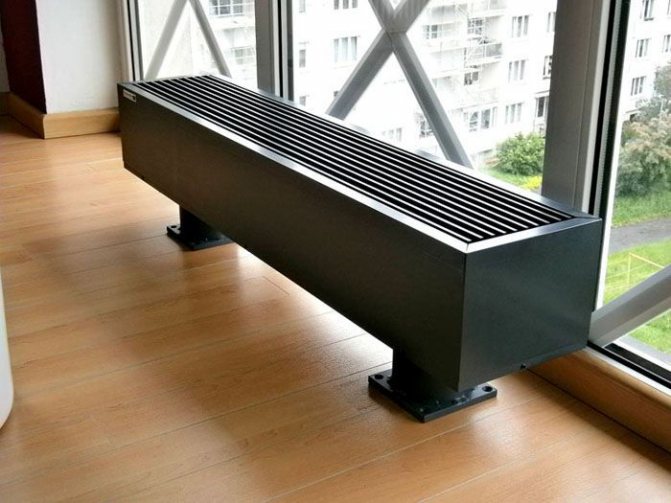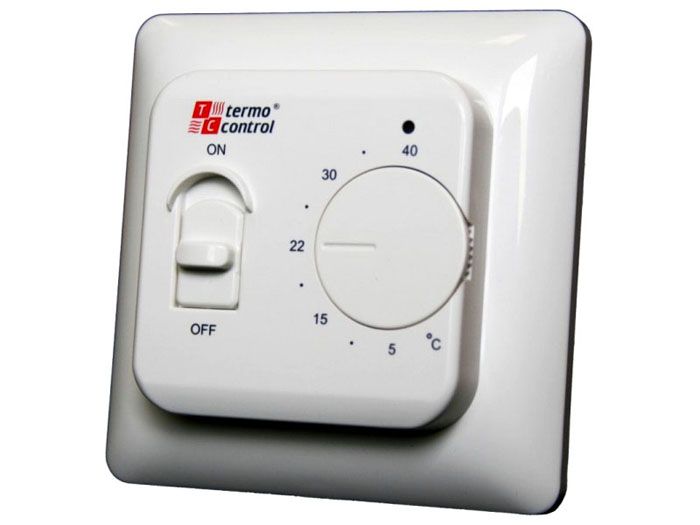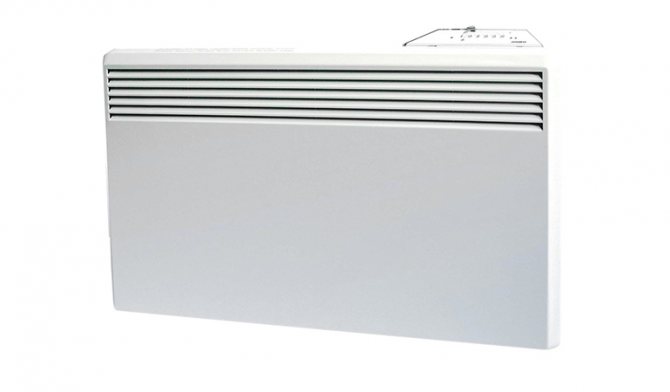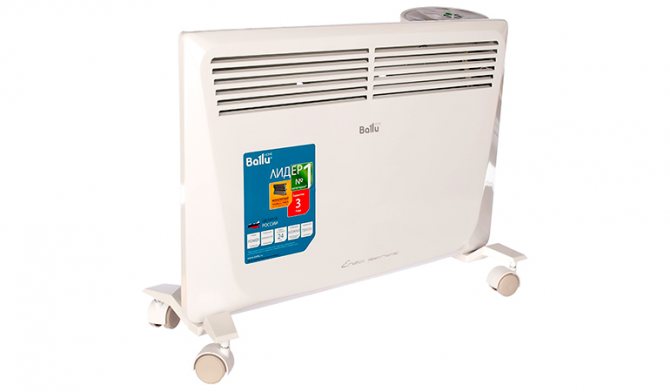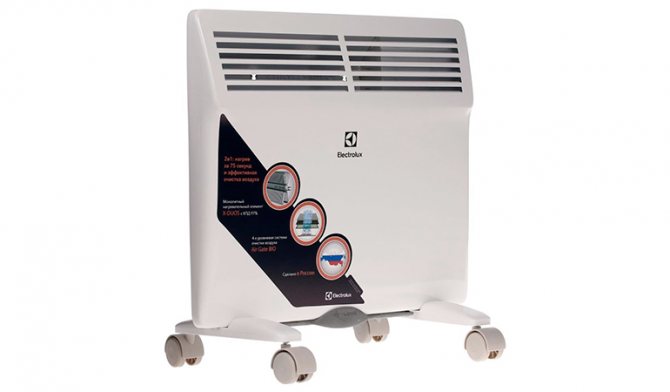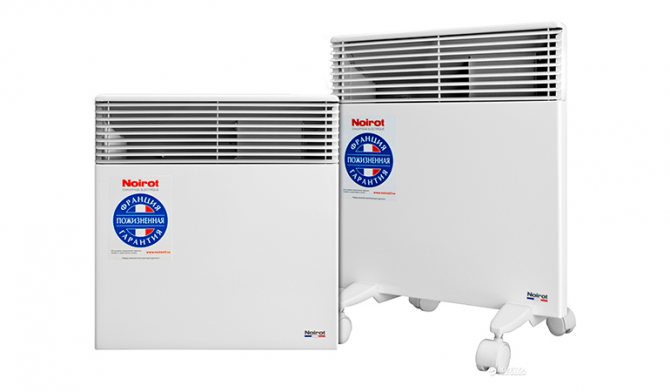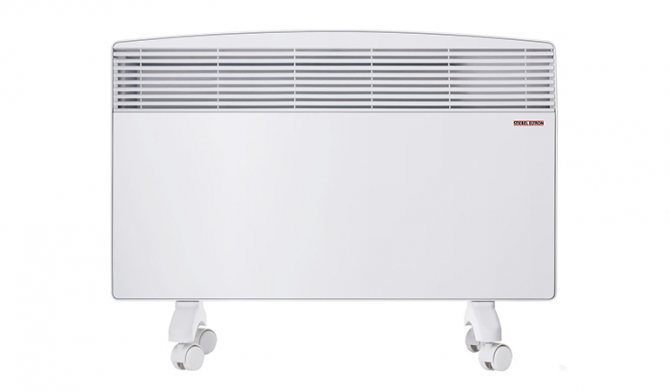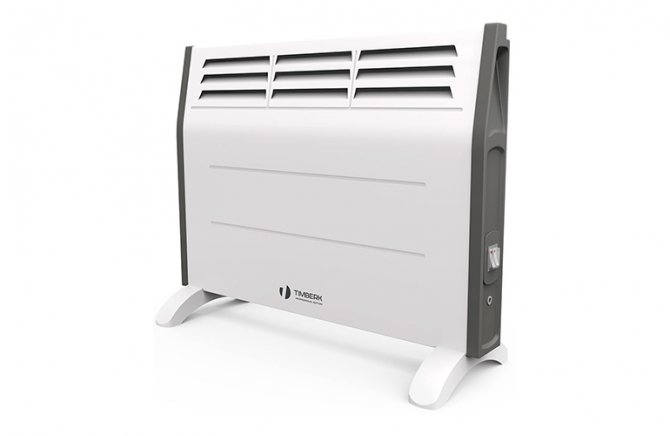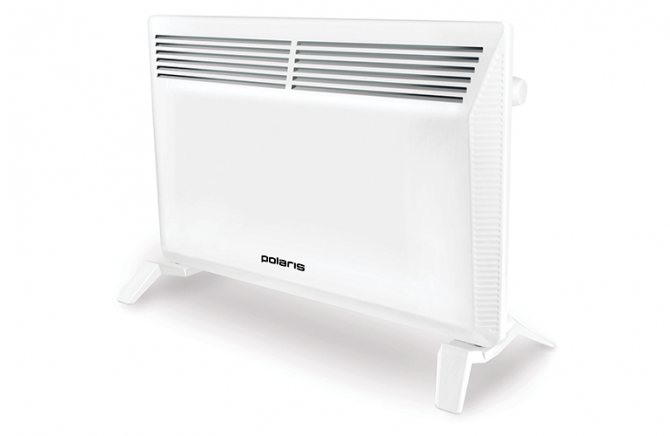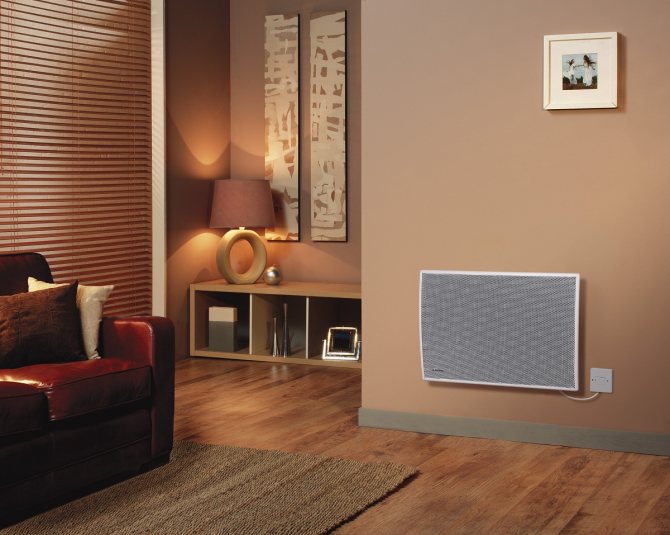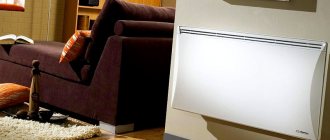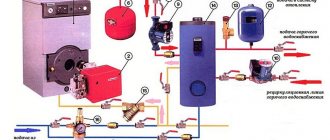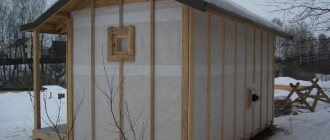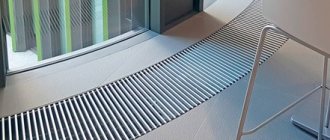Energy saving
Energy saving in electric heaters occurs due to the control of the required temperature for heating the room using a thermostat. The device reaches the set temperature regime, the power is turned off, and when the heater cools down, it turns on again. Also, the choice of the body material and the type of coolant are aimed at energy saving.
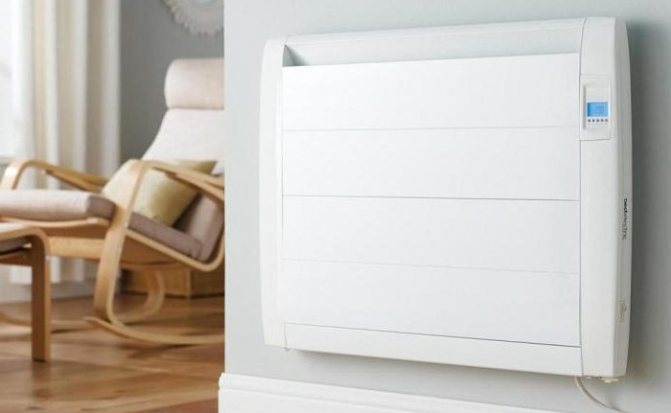
Functions that might be useful
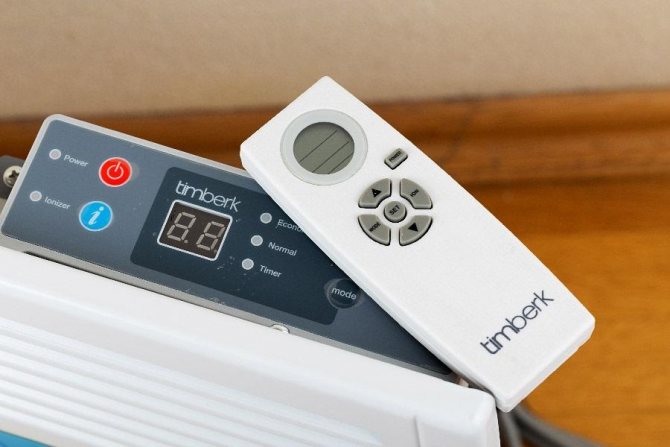

The functionality of convector heaters deserves special attention. Modern models have a number of useful options necessary for convenient and comfortable use.
Additional options for good convectors for heating houses and apartments:
- Built-in air ionizer. An ionizer is a type of air purifier that charges fine dirt and dust with negative ions, after which the suspension settles on the floor.
- Timer. Setting the exact operating mode will allow you to create maximum comfort in your home. It is necessary to choose a model with a timer when it is not possible to turn on and off the convector manually. In all the rest, the situation is that this option will not play a significant role, but will increase the comfort of use.
- Frost protection. This is an indispensable option for models used indoors without central heating in winter - for a summer house or a cottage. The essence of the function is as follows - when the air temperature drops below 5 degrees, the thermostat automatically activates the heater. The convector heats the room up to the set temperature, then switches off automatically. The cycle "on-off" is repeated.
- Overheating protection is a standard option for electric heaters. The protection system shuts down the device if the heater temperature reaches its peak values.
- Roll-over protection is useful for floor-standing convectors. The device should always be in an upright position, if the device falls down due to carelessness, the heating element turns off.
- Remote control is necessary if the device is fixed high or located far from the main place of stay of people. In addition, it is very convenient to operate the device from a distance.
Advantages and Disadvantages of Electric Wall Heaters
In addition to the main advantage - there is no need to supply gas to the site, because only a socket is needed for an electric battery, an autonomous electric heating system has additional pros and cons.
Benefits:
- wide range of offered models;
- environmental Safety;
- variety of design solutions;
- ease of installation;
- work in automatic mode;
- high efficiency;
- quiet operation of most models.
Disadvantages:
- high cost of electricity;
- the need to install a multiphase distributor;
- the price of an electric radiator is higher than a conventional battery.
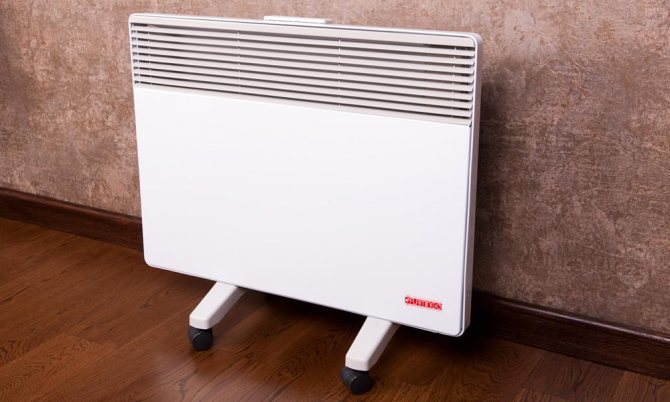

Types of wall batteries
There are several types of wall-mounted electric batteries that differ in their principle of operation.
Infrared
The principle of operation of infrared batteries is to convert electrical energy into thermal radiation. Long-wave radiation heats the floor and the objects on it, which serve as heat transmitters.Heating objects, rather than air, retains heat longer, allowing you to use energy economically.
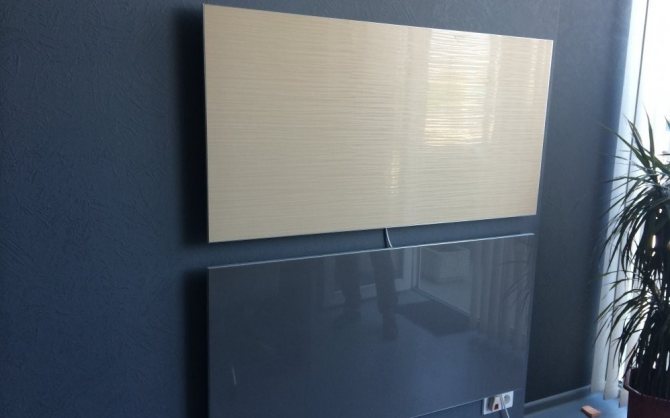

Convector
In electric convectors, heat is transferred by heating the air passing through the device. Warm air increases in volume and leaves through the grilles of the device, and cold air enters its place. Thus, the room warms up very quickly. It is important to prevent the presence of drafts so that the convector does not work uselessly.
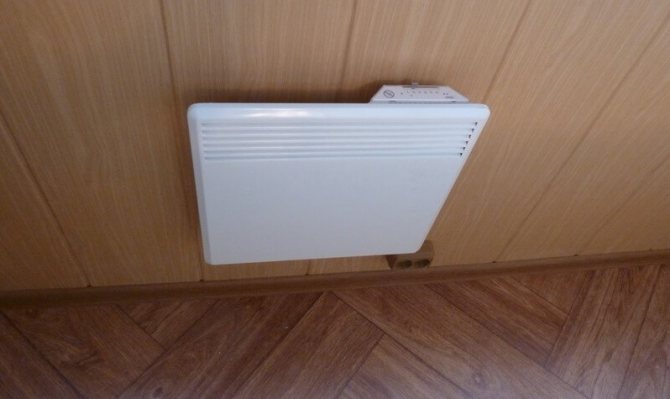

Electric wall convector prices
Electric wall convector
Oil radiator
The element inside the radiator heats up the intermediate heat carrier (mineral oil), which then heats up the unit body. The oil used keeps heat for a long time, thus saving energy costs. Oil radiators are cheaper than other types of heaters and have small dimensions. However, heaters of this type warm up a room rather slowly, especially a large one. The surface of the radiator heats up to 150 °, which requires careful handling of the device.
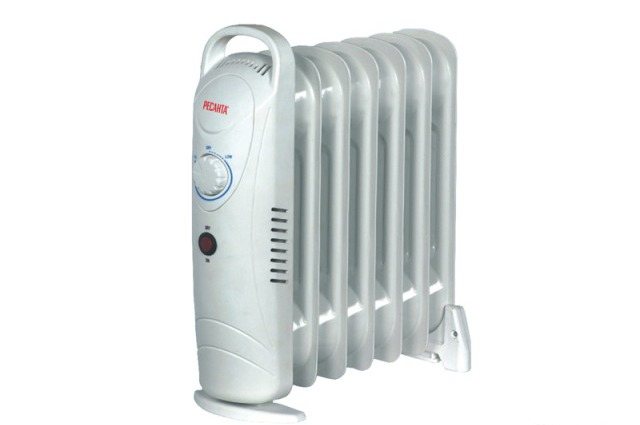

Fan heaters
The essence of fan heaters is to warm up the air flow that passes through the heating element. Air supply to the device is provided by a built-in fan. Most often, fan heaters are used in rooms where maintaining a constant temperature is not required. Many models can be used as a regular fan.
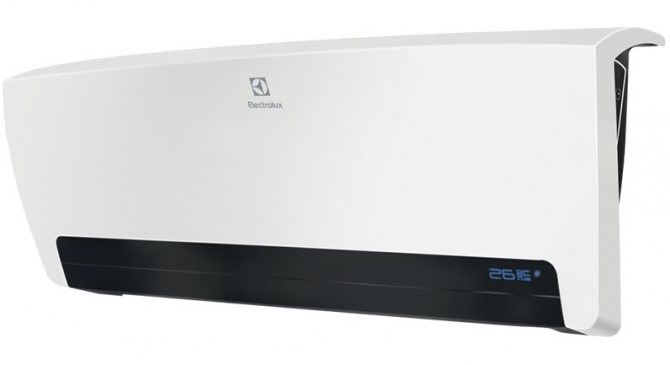

Electric fan heater prices
Electric fan heaters
Vapor-droplet heater
In the system of a para-droplet heater, there is water in an enclosed space, which is heated by electricity and turns into steam. Condensation then occurs and the water is returned back to the liquid carrier system. This principle of operation of the heater allows you to use two types of energy at once: from the coolant and from the condensation of steam. After turning off the power, the device retains heat for a long time.
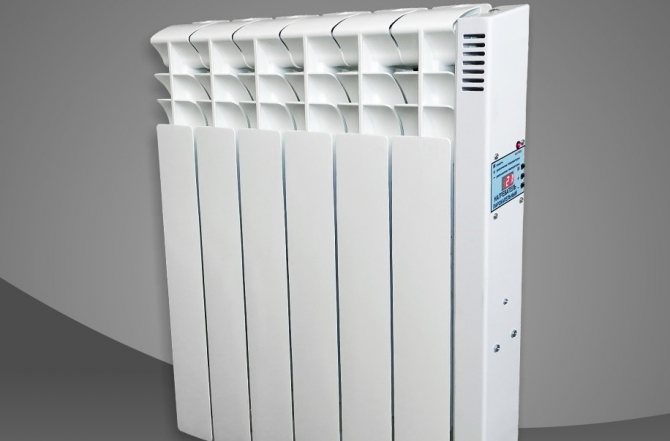

Carbon Heaters
Carbon fiber heaters use carbon fiber embedded in a quartz tube as a heater. This is a long-wavelength emitter that heats objects in the room, not the air.
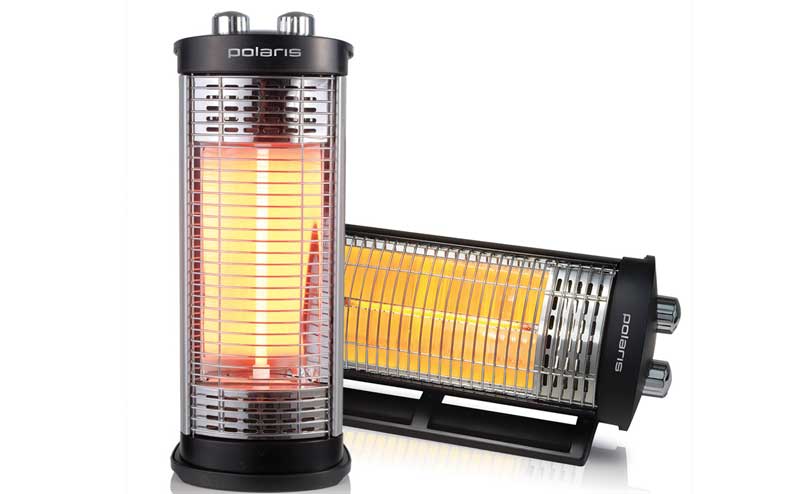

Lithium Bromide Heaters
The lithium bromide radiator consists of vacuum sections filled with lithium and bromide liquid, which turns into steam at 35 ° C. Steam rises to the top of the sections, giving off heat, and heats up the radiator.
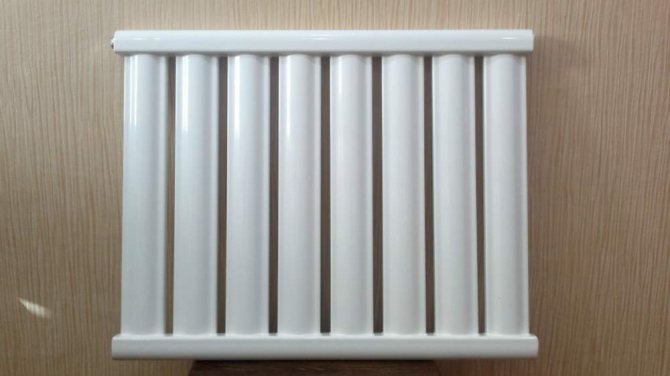

Reliable thermal convectors for home: their difference from a radiator
The main difference between the convector and the radiator is that its surface does not get very hot. This is very much appreciated by families with small children. It is almost impossible to get burned from it. This feature makes it possible, without worrying about the consequences, to build the unit into the floor or wall.
If we talk about the heating speed, even the largest room will be heated by a household convector faster than a radiator, but only if its power is correctly calculated.
Radiators are much easier to clean from dust. Their shape allows for hassle-free cleaning. The convector must first be disassembled, and only then cleaned. In terms of price, radiators also outperform convectors.
The main difference between the two devices is how they work:
- The convector is based on the convection principle;
- The radiator works on the principle of radiation.
These two differences make us choose one of these two types of heaters.
Recommendations for choosing an electric wall heater
When choosing economical electric wall-mounted heating batteries for summer cottages, you need to take into account some recommendations.
High-quality and economical radiators are distinguished by the following characteristics:
- With a small amount of funds for the purchase of a heater, focus on models with a manual temperature control, such models are cheaper.
- When buying a radiator for your home, pay attention to the material of the heating element. For example, the service life of a tubular electric heater is 15 years. There are models with a long service life. Convectors with a needle heater are also considered budgetary, they have a limited service life, but are suitable for rooms that do not require constant heating, for example, a summer residence.
- It is best to choose electric heaters with electronic thermostats. They are more expensive, but they are more sensitive to temperature fluctuations, allowing you to maintain a given level of heat and save energy.
- If you decide to purchase a floor-standing radiator, pay attention to the presence of a rollover sensor. Especially if you have small children.
- It is best to install electric heaters under each window, since these places are more vulnerable when cold enters the room.
- The optimal power of the convector is calculated according to the principle: 1 kW for every 10 sq. m. with a ceiling height of up to 270 cm.If the ceilings are higher, then add 10% for every 10 cm.
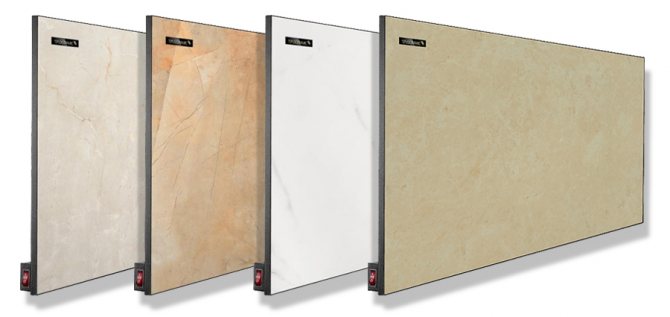

A brief overview of models and manufacturers of heating convectors on the Russian market
For ease of understanding, we suggest that you familiarize yourself with the manufacturers and their models in a tabular version.
| brand, model | Power, W | Size, cm | Protective functions | Control |
| Nobo NFC 4S 10 | 1000 | 67.5×40×5.5 | Thermostat, waterproof housing | Mechanical |
| Ballu BEC / EM-1000 | 1000 | 46×40×8.2 | Overheat shutdown, auto restart | Mechanical |
| Electrolux Air Gate 2 | 1500 | 41.3×64×11.2 | Waterproof housing | Electronic |
| Timberk TEC.E3 M 2000 | 2000/1150/850 | 77.5×44×13 | Waterproof housing | Mechanical |
Installing a wall convector
You can install the convector by contacting professionals, or on your own in accordance with the manufacturer's recommendations.
If the installation of the electric battery is carried out independently, then you can use the following step-by-step instructions:
- Remove the device from the packaging and flip it over to the back.
- Unscrew the bracket if not packed separately.
- Attach the mount to the wall and mark the location for the holes with a marker. Observe the manufacturer's recommendations for distances from floors and walls. If these are not included in the instructions, use the following parameters: height from the floor and distance to the nearest objects - 20 cm, the gap between the wall - 20 mm, from the outlet - 30 cm.
- Use self-tapping screws for a wooden wall. For concrete, drill holes with a puncher and drive in dowels. Next, screw on the mounting frame.
- Slide the heater onto the frame.
- Connect the power supply.
- Set a comfortable temperature. Find out the calculation of the heat load for heating the building calculator by the link.

